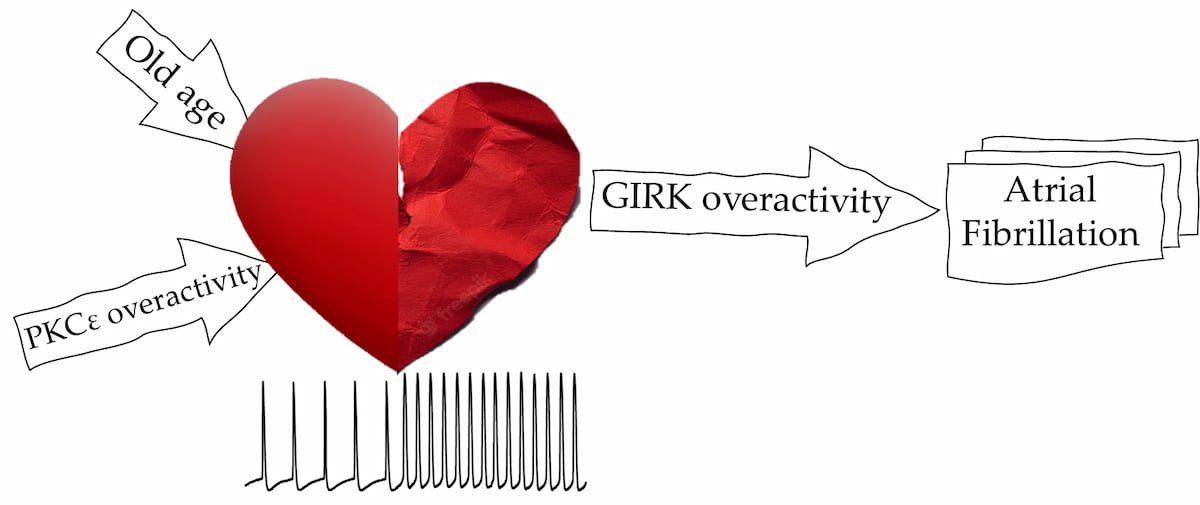Bouvé researchers have just had work published by the Proceedings of the National Academy of Sciences. The article, Mechanism of PKCε Regulation of Cardiac GIRK Channel Gating, highlights the work which introduces a new drug target for atrial fibrillation (AF) using optogenetic technology to reveal an underlying mechanism that is responsible for AF.
According to researcher Kirin Gada, the goal of the research is to gain mechanistic insight into cardiac G-protein gated potassium channel (GIRK1/4) dysfunction, mediated through modification of a specific amino acid by the enzyme PKCε, and the contribution of subsequently altered GIRK activity in deforming the atrial action potential leading to atrial fibrillation.
“Through experiments on isolated, live mouse hearts, human atrial stem cells, and cutting-edge optogenetic techniques, we uncovered a pathological role of the enzyme protein kinase C-ε (PKCε) in the development of atrial fibrillation,” said Gada. “This enzyme promotes the overactivity of a cardiac potassium channel (GIRK1/4) by modifying a specific amino acid on the channel resulting in enhanced channel activity through modulation of its association with a necessary co-factor- PIP2 (a phospholipid component of the cardiac cell membrane).”
The work is important, Gada says, because “Atrial GIRK1/4 channels are activated by the vagus nerve to control heart rate. They are critical determinants of heart rate variability (HRV), an index of cardiac health, endowing the heart with the adaptability it needs to make rapid adjustments in heart rate, for e.g., running to catch a bus. GIRK channels are attractive drug targets against atrial fibrillation (AF), the most common arrhythmia whose prevalence increases with age, with an increased risk of mortality, stroke, and myocardial infarction. The lack of specificity of the current antiarrhythmics used poses a significant risk for ventricular side effects. This makes proteins expressed specifically in the atria rather attractive targets for pharmacotherapy.”
The Logothetis Lab, in collaboration with the Plant Lab at Bouvé College and the Noujaim Lab at the University of South Florida, were involved in this work.
The team’s research sets the stage for coupling the molecular insights gained from this paper with small molecule regulators of activity to specifically reverse the PKC-mediated overstimulation of channel activity. Gada says, the Logothetis Lab is involved in the development of small molecule inhibitors with the goal to dial down the aberrant activity enough to correct the AF problem without completely shutting down channel activity or compromising cardiac health by suppressing HRV.




